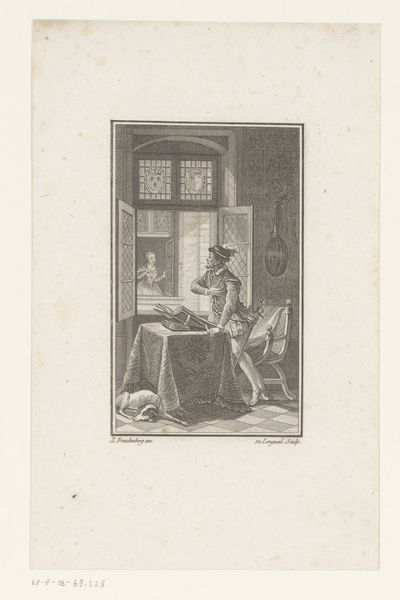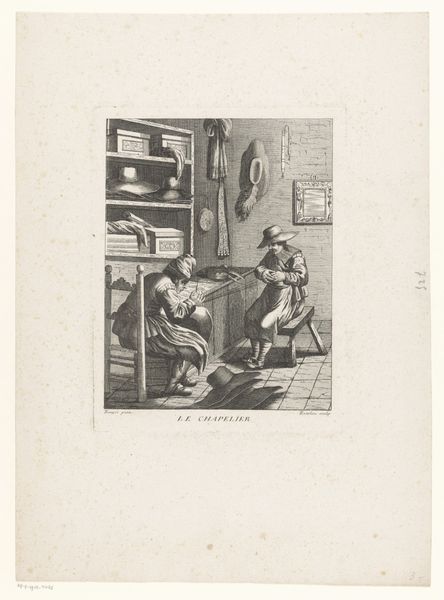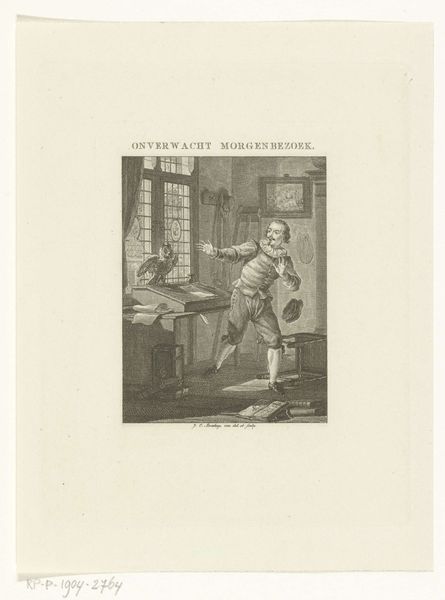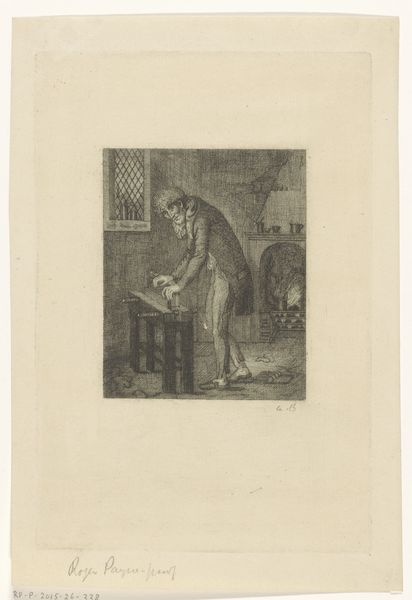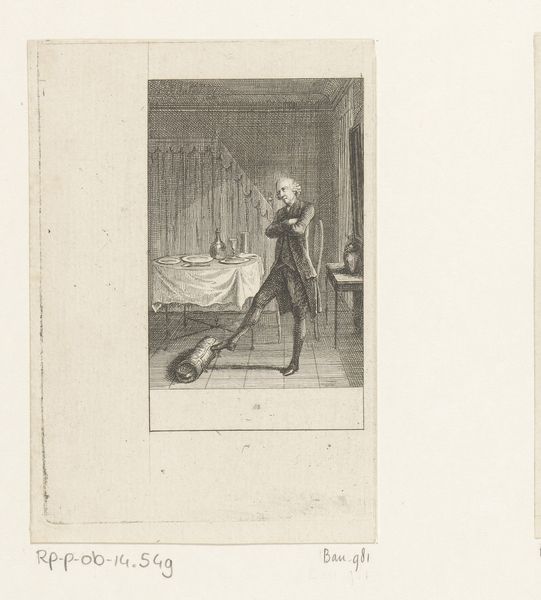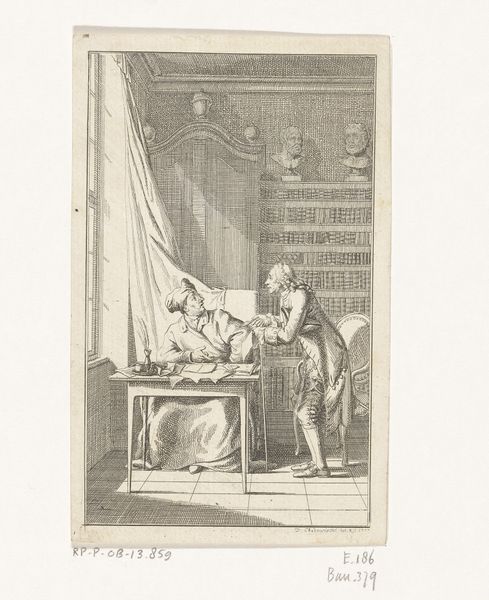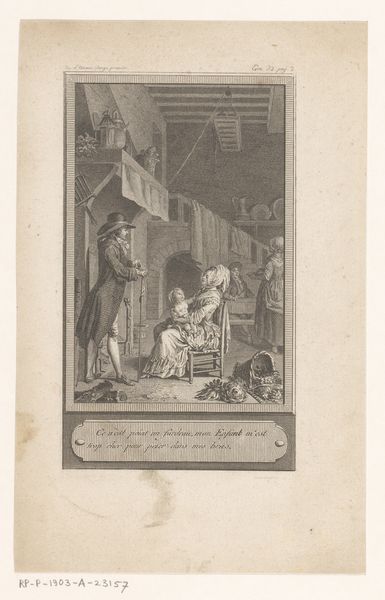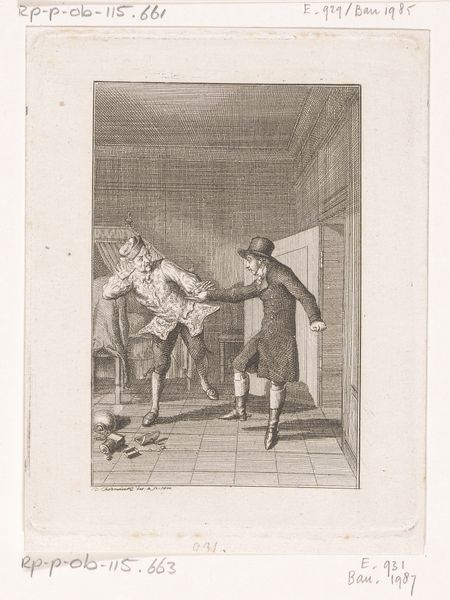
print, engraving
#
portrait
#
neoclacissism
# print
#
figuration
#
romanticism
#
line
#
history-painting
#
engraving
Dimensions: height 213 mm, width 145 mm
Copyright: Rijks Museum: Open Domain
Editor: This engraving by Jacques Louis Copia, from 1808, is titled "Milord Edouard weigert te vechten met Saint-Preux"—it looks to me like Milord Edward refuses to fight Saint-Preux. I’m really struck by how this image depicts a tense moment, capturing a clear refusal, perhaps an ethical stand. How do you interpret this scene, looking at the work from a materialist lens? Curator: Considering this print through a materialist lens compels us to investigate the engraving process itself. Engraving, as a reproductive medium, made images accessible to a broader public, thereby democratizing narratives. How might this accessibility shape perceptions of honor and conflict among the different classes engaging with the image? Editor: That's a great point! The engraving allows this particular depiction of morality, maybe even class relations, to spread widely. Is there more to this work that would confirm that? Curator: Indeed. Examine the depiction of clothing and interior space, which communicates economic status. Milord's sword versus Saint-Preux's seated and seemingly intellectual pose underscores class differences. But I would encourage you to think about where those raw materials originate, and what industries benefited from it. Do you know if Copia used certain techniques in the service of Neoclassicism, which then served an agenda? Editor: I see what you mean, a class perspective adds more depth. What's next? Curator: Exactly! The physical act of producing the engraving - the labor involved, the tools utilized - contributed to the meaning we glean from it. Thinking about distribution and consumption of materials allows us to address hidden structures within the print. Considering materials, labor, and circulation together, do you see new connections emerging? Editor: I am beginning to appreciate how the very nature of the engraving, from its creation to circulation, profoundly influences how the narrative of class and moral refusal reaches its audience! Curator: Precisely. By understanding these material and historical underpinnings, we uncover deeper layers of meaning embedded within the artwork.
Comments
No comments
Be the first to comment and join the conversation on the ultimate creative platform.
